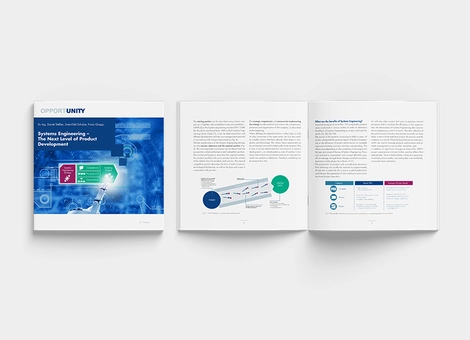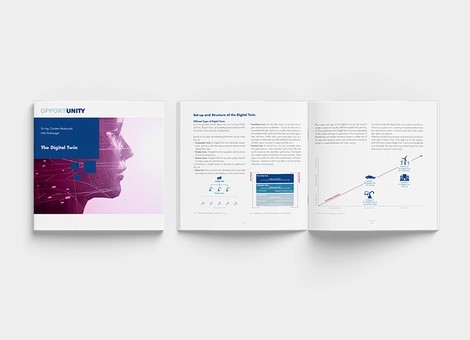Digitalization of Product Development
OPPORTUNITY Facts for Experts and Decision Makers
The current business environment in the automotive industry is characterized by global technology trends such as digitalization and connectivity, as well as changing customer needs that are resulting from urbanization and social changes. In terms of sustainability, the transition to electric motors is of particularly great importance. By taking place simultaneously, these megatrends are demanding enormous changes from the entire industry.

Wandel in der Automobilindustrie
The challenges for product development
The megatrends are presenting the automotive industry with enormous challenges. However, the required number of changes are providing the industry with an opportunity to depart from the path of evolutionary developmen and to redesign at least parts of future business free from any constraints. The OPPORTUNITY describes the decisive challenges for the automotive industry:
- System Architecture
- Safety & Security
- Speed & Time to Market
- Continuous Data Networking
- Complexity Control
- Data-driven Innovation & Development
The End-to-End Process has already changed immensely in the past few years – from the anticipated market and customer needs to development to market entry, sales and after sales. The greatest change is still to come. Answers to the described challenges must be found in new approaches and methods to processes. Responsibilities are also changing. Organizations are adapting to new circumstances. The OPPORTUNITY presents solutions for digitalized and model-based development in the automotive industry.
Control variance and shorten time-to-market with MBPLE: Driven by digitalization and Industrie 4.0, new possibilities of efficient mass customization are arising for OEMs. In order to be able to offer the best possible customer-centric, individualized solution, they are operating with many different variants. While OEMs depend on alliances and divided modules to lower costs, these also increase the existing complexity within organizations. Model Based Product Line Engineering promises a way out of this dilemma.
Digitalization and the Internet of Things need new concepts in terms of product lifecycle management (PLM). The digital twin is the most widely discussed concept and represents a digital model of a physical system, such as a vehicle. This digital twin is linked to a physical system throughout the entire lifecycle and allows information to be represented and used in the virtual world that, for example, arises when using the physical system.
The authors

Dr.-Ing. Daniel Steffen
Partner, Head of R&D & Systems Engineering

Dr.-Ing. Tobias Wigger
Senior Manager




